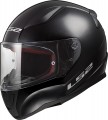Size
The sizes in which this helmet model is produced.
The appropriate helmet size depends primarily on the circumference of the wearer's head. The circumference is measured at the widest point of the head — usually at a level of 1 – 2 cm above the eyebrows and along the protrusion at the back of the head; more detailed recommendations and descriptions can be found in special sources. Here we note that although manufacturers use the same size designations —
XXS,
XS,
S,
M,
L,
XL, etc. — specific sizes for different brands may vary slightly; for example, XL can fit both 60 – 61 cm and 61 – 62 cm. This seemingly small difference can significantly affect the comfort and safety of use. Therefore, when choosing, you need to be guided by the size tables of a particular manufacturer.
It is also worth considering that helmets with the same size designation may differ not only in actual size, but also in the shape of the internal space. Therefore, even compliance with the size table is not a guarantee that the product will be suitable; the most reliable way is to test the helmet "live" before buying.
SHARP safety rating
The results shown by this helmet model in the SHARP safety rating.
SHARP is a comprehensive testing methodology designed to determine the degree of protection and safety level when using a helmet. Each helmet is tested for direct (linear) impact as well as glide impact friction; in the first case, the acceleration acting on the motorcyclist's brain is measured, in the second, the twisting force acting on the neck is also measured. Tests are conducted for different points of impact, each test involves a minimum of 32 test collisions (more if necessary). The data obtained is compared with information about real injuries, and based on this, the helmet is rated on a five-point scale — from 1 to 5 stars.
The higher the SHARP rating, the safer the helmet and the lower the chance of serious injury while wearing it. However, when choosing this parameter, it is worth considering some nuances. First, the SHARP check is only done on models sold in the UK; and therefore the absence of such certification does not mean poor protection — it may indicate that the helmet simply did not make it to the test. Secondly, the cost of a helmet practically does not affect the number of stars: neither 5 stars for a low-cost model, nor 2-3 stars for a top one are rare. Thirdly, the SHARP programme only checks safety in collisions, it does not affect issues of convenience, aerodynamics, visibility, etc. And even the SHARP experts themselves recommend choosing the most conveni...ent models first, and only then choosing the option with the highest number of stars.
Country of origin
The country of origin is usually considered as the country of origin of the brand — the "homeland" of the company that sells helmets. At the same time, the actual place of release may not coincide with the claimed country of origin, but this is not critical — the quality of the product is determined more by the reputation of the brand (and the thoroughness of quality control) than by the country of actual production.

